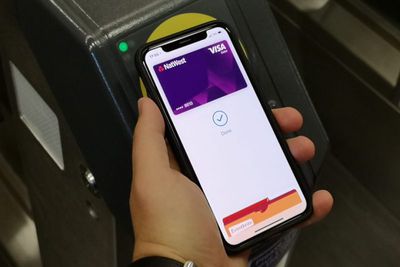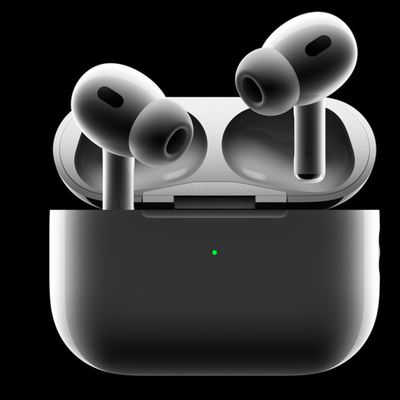Apple Pay's Express Transit Mode Working in Parts of London Underground
While not yet reflected on Apple's website, Apple Pay's Express Transit mode has been functional on at least some tube and bus routes in London since last Tuesday or so, according to multiple MacRumors readers.

One reader said the Express Transit mode works on Transport for London's U5 bus route between Hayes and Uxbridge, as well as at the Ealing Broadway and Farringdon stations serving the London Underground and National Rail. Not all stations support Express Transit mode yet, so this could be early testing.
Despite this, Transport for London has advised customers that Express Transit mode is "not currently an option" as recently as Thursday, although it said it is having "positive discussions with Apple" about enabling the feature. Apple and Transport for London did not respond to multiple requests for comment.
Express Transit mode eliminates the need for users to authenticate with Face ID, Touch ID, or a passcode or even wake their device when they pay for rides with Apple Pay. Simply hold your iPhone or Apple Watch near the contactless reader until you feel a vibration and payment has been completed.
Apple Pay with Express Transit mode is also available in New York City, Portland, Beijing, Shanghai, and where Suica is accepted in Japan.
Popular Stories
The long wait for an Apple Watch Ultra 3 appears to be nearly over, and it is rumored to feature both satellite connectivity and 5G support.
Apple Watch Ultra's existing Night Mode
In his latest Power On newsletter, Bloomberg's Mark Gurman said that the Apple Watch Ultra 3 is on track to launch this year with "significant" new features, including satellite connectivity, which would let you...
Apple's next-generation iPhone 17 Pro and iPhone 17 Pro Max are just over two months away, and there are plenty of rumors about the devices.
Below, we recap key changes rumored for the iPhone 17 Pro models.
Latest Rumors
These rumors surfaced in June and July:Apple logo repositioned: Apple's logo may have a lower position on the back of the iPhone 17 Pro models, compared to previous...
The iPhone 17 Pro Max will feature the biggest ever battery in an iPhone, according to the Weibo leaker known as "Instant Digital."
In a new post, the leaker listed the battery capacities of the iPhone 11 Pro Max through to the iPhone 16 Pro Max, and added that the iPhone 17 Pro Max will feature a battery capacity of 5,000mAh:
iPhone 11 Pro Max: 3,969mAh
iPhone 12 Pro Max: 3,687mAh...
Apple's position as the dominant force in the global true wireless stereo (TWS) earbud market is expected to continue through 2025, according to Counterpoint Research.
The forecast outlines a 3% year-over-year increase in global TWS unit shipments for 2025, signaling a transition from rapid growth to a more mature phase for the category. While Apple is set to remain the leading brand by...
AppleInsider's Marko Zivkovic today shared a list of alleged identifiers for future Mac models, which should roll out over the next year or so.
The report does not reveal anything too surprising, but it does serve as further evidence that Apple is seemingly working on new models of every Mac, including the MacBook Air, MacBook Pro, iMac, Mac mini, Mac Studio, and Mac Pro.
Apple is...
The upcoming iPhone 17 Pro and iPhone 17 Pro Max are rumored to have a slightly different MagSafe magnet layout compared to existing iPhone models, and a leaked photo has offered a closer look at the supposed new design.
The leaker Majin Bu today shared a photo of alleged MagSafe magnet arrays for third-party iPhone 17 Pro cases. On existing iPhone models with MagSafe, the magnets form a...


















